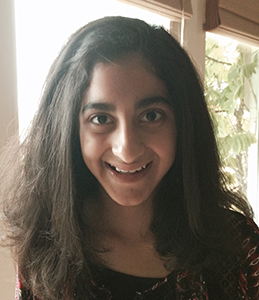My name is Malaina Kapoor, and I am 12 years old. In any other school I would be considered a 7th grader, but my school has no grade levels. At Khan Lab School (KLS), 32 students ages 5 to 12 all work together. We go to school year-round. We all, from the youngest kindergartner to the oldest middle schooler, decide our schedule and term goals, and help shape the new school with our ideas (see “The Rise of AltSchool and Other Micro-Schools,” what next, Summer 2015).

Here’s what a typical day looks like at my school:
8:50 a.m.: I ran through the school doors and flung my lunchbox into my cubby. As my brother walked toward his friends and joined them on Duolingo, a language-learning web site, I remembered that the first edition of the KLS Weekly was coming out. I rushed to the carpet and started editing the template and arranging all the articles Newspaper Club had written. My article on Michael Brown and Eric Garner was already in the paper, but the one on Nobel laureates Malala Yousafzai and Kailash Satyarthi still needed to be added, along with many sports articles, games, current events, and puzzles.
9 a.m.: Every day the KLS community gets together to say good morning and get energized. My five-year-old friend Mylan slipped her hand into mine as we all turned to the student leader of the meeting, Isabella. This morning our greeting and energizer were blended into one—the snowball greeting. As a basket came around, I reached my hand in and drew out a crumpled-up piece of paper. Then, for one minute, we had a “snowball” fight. When time was up, the loud laughter ceased and everyone picked up a snowball, uncrumpled it, and went to shake hands with the person whose name was on their paper.
9:15 a.m.: Instead of having our usual meeting with our advisor, green group (the older students in the school) got to work. I continued editing the newspaper and then started working on Khan Academy JavaScript. I learned some more about strings (sequences of characters in JavaScript), and my friend and I experimented with a program to make the stroke thickness of the ellipses on the screen change based on the position of the mouse. During that time, a teacher also helped me get set up on a web site that would allow my classmates to sign up for tutoring sessions with me.
10:30 a.m.: All 14 members of green group headed to Room 5 to work together on Tales from the Human Genome, a Udacity genomics course. Udacity is an online tool that offers MOOCs (massive open online courses). I am also taking the Udacity Intro to Physics course, where I am learning how to measure the circumference of the earth. I will later teach a physics class to the rest of my group using what I am learning.
We learned about the noncoding region of the gene, the gene responsible for lactose intolerance, and finished Lesson Four. We had just started on the problem set when we realized it was time for wellness, or Physical-Mental Education.
Noon: During wellness, we watched a video of musicians playing a medley of music from around the world. Then we had a discussion about the different elements of the piece that made it come together.
1 p.m.: After recess and lunch, we got into our squares. Squares are groups that have two older students and two younger ones. My square and I sat down and reflected on how we demonstrate self-awareness throughout the day.
1:15 p.m.: I had signed up for a brainstorming session with Orly, a KLS staff member. I needed help defining my ideas for an individual project. My only restriction was that my project had to fall within our inquiry arc, a term-long theme. This term’s inquiry arc was food. I told Orly I was interested in starting a small nonprofit that would contribute to solving the Bay Area’s hunger problem. She e-mailed me some articles on mission statements, intended impact, end game, and NGO management. After our meeting, I worked on Khan Academy math, something I do for four hours a week.
3:30‒6 p.m.: We don’t have assigned homework, but most of us continue working even after dismissal begins. Most of my friends stay for extended day, where they can continue their projects and do fun activities such as Lego Robotics.
Malaina Kapoor attends the Khan Lab School in Mountain View, California, and is a contributor to the school blog.
This article appeared in the Fall 2015 issue of Education Next. Suggested citation format:
Kapoor, M. (2015). A Day at the Khan Lab School: Inquiry and self-direction guide student learning. Education Next, 15(4), 88.


